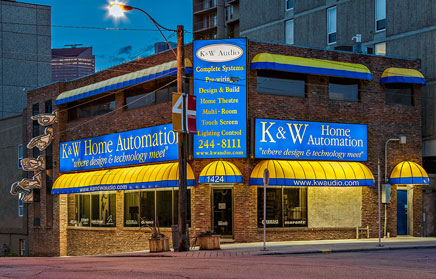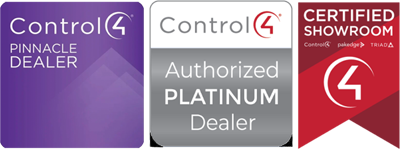Tip #40:
This year’s buzzword in electronics is “structured wiring.” Ironic really, since the concept has been around ever since Ma Bell made a second telephone available on the same line in the same house. Structured wiring in its most basic form consists of two or more devices, hardwired together. Today, when people talk about structured wiring they likely have in mind the ability to connect several computers in different rooms so that a scanner, or printer can be shared.
Structured wiring is easier to implement at the construction stage. It can be added to an existing structure, but it will likely cost a little more and some of the flexibility for optimal device placement may be forfeited. For example, it is difficult to put a terminal plate in the outside wall of a structure after the drywall is up. Keeping that in mind, for the purposes of our discussion, let’s assume that we are dealing with a structure at framing stage or, better yet, we are working with the blue prints.
First we must decide on the types of devices we wish to accommodate. The range can include computer, audio, video, telephone (and telecom devices like fax machines) and infrared control. Technically, a security system is also a structured wiring system, however all but the most sophisticated tend to be self contained and do not interface well with other devices in the home. Fortunately, the basic principles for all of these systems are essentially the same. You need to decide where you want to access the device and what you need to connect it to. Between these two devices is a “Hub” or “home run” location that makes the transfer of information possible.
For example, let’s assume that your home has a den and/or a home office with a good quality laser printer and a high quality colour scanner. Should a situation arise where one of you wishes to work on a presentation for work, while another works on some posters for a yard sale, and each of the children has a homework assignment, due the next day. Even though the children have their own computers, the “good computer,” the one hooked up to the scanner and laser printer is in the den. Having brought the lap top home from work, to use the scanner and printer you need to get down on all fours to unplug them and snake the wires up to your lap top.
On the other hand, if your home has a properly designed structured wiring system, several options become available. With the hum of the dishwasher in the background, the family can all retire to their respective rooms and get to work. Each of the children’s computers is plugged into a terminal plate in the wall that allows them access to the printer and scanner from their bedrooms. In the meantime, someone can be working away quietly in the office, while someone else can plug the laptop into a terminal jack on the wall and peck away at the keyboard while watching the game on the tube. It’s all a question of getting some CAT5 and RG6 wires in the walls with the proper hub and port configuration in the utility room. Incidentally, this structure has come to be known as a RAN, or Resident Area Network.
The same simple principles are used with video distribution. DVD (Digital Video/Versatile Disc) players are the most efficient information delivery device that the consumer electronics industry has seen in the last 10 years. Good quality DVD players still cost $750 or more, and will likely continue in that price range for the foreseeable future. This makes it a little pricey to have several spread throughout the house with every TV. A well designed structured wiring system makes this expense unnecessary. The DVD player in your home theatre (or wherever) can provide a signal to every TV in the house.
Here’s another scenario to consider. It’s Friday night and you have committed to stay home and watch a movie with the family. You have rented the latest DVD and you’re enjoying it in your home theatre. As the dialogue starts to drag a little bit you reach for the pause button. “Time for popcornÖ” “ahhÖ Mom/DadÖ it’s just getting to the good part!” If you have included a basic structured wiring package in your home, the pause button becomes a thing of the past. Instead, you simply walk up to the kitchen, flick on the TV, tune in the assigned channel and continue to enjoy the movie. As you are looking for the popcorn popper, the doorbell rings. Rather than going to the door, simply flip your TV to another channel and see who’s at the door through a concealed camera. Your visitor is unaware that he/she is being observed.(it’s another pesky salesperson). You could even press a hidden button, which lets loose the dogsÖ ohÖ sorryÖ flashback to a bad experience. !-)
All of this can be accomplished through a simple device known as a “modulator” which is hidden away in the utility room, next the aforementioned computer hub. In the same way that you can use just one DVD player, you can also use just one VCR. Again, this means that instead of having several VCR’s on various TV’s, you can have the one in the Home Theatre feed the whole house. If the movie you bring home on DVD Friday night is not the one desired by the kids, they can watch a video on another TV. You can monitor what they are watching simply by switching channels in the Home Theatre room. You could watch them from a “Nanny Cam” set up in their room if the need arises. AgainÖ it’s all a matter of getting the wires in the walls.
With the increasing need for high speed, secure communication, high quality telephone lines are becoming more and more necessary. Make sure that, for the cost of a few pennies a foot, all telephone wiring you do from now on is with CAT5 and not the more common CAT3 wire. The amount of twist and the type of jacketing used in CAT5 wire make it more suitable for high-speed data transmission with less “ingress” or interference. This makes for better and cleaner connections not only for your telephone but also for fax machines and computer networks. It is also a good idea to have a surge suppressor on the line to protect from voltage spikes. With telephone companies becoming larger and larger there is a very real danger that the level of service will diminish. An investment of $100 for a good surge suppressor could well save thousands of dollars in damage to your gear.
Of course, far and away the most popular form of structured wiring is the distributed audio system. We have covered this extensively in previous “tips” ( see #33 and #34). If you don’t have them you can visit our website @ www.kwaudio.com or (call us and we can fax them to you) so we won’t go into it again here.
Bottom line? GET THE WIRES IN THE WALLS!


